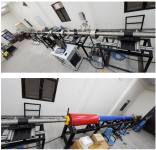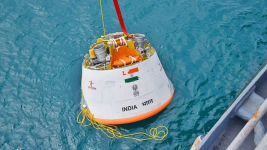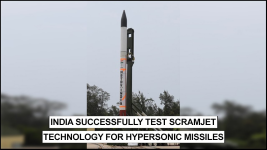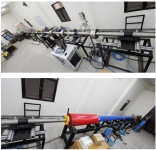
In a groundbreaking development for India's aerospace research and defense capabilities, the Indian Institute of Technology Kanpur (IIT-K) has successfully established and tested the nation's first Hypervelocity Expansion Tunnel Test Facility, known as S2.
This state-of-the-art facility propels India into an elite group of countries possessing advanced hypersonic testing capabilities.
Hypersonic speed refers to speeds that are significantly faster than the speed of sound, typically defined as speeds exceeding Mach 5. Mach 5 is five times the speed of sound, which is approximately 343 meters per second.
The S2 facility, affectionately nicknamed 'Jigarthanda', spans 24 meters in length and is housed within IIT Kanpur’s Hypersonic Experimental Aerodynamics Laboratory (HEAL) at the Department of Aerospace Engineering.
It was indigenously designed and developed over three years with the support of the Aeronautical Research and Development Board (ARDB), the Department of Science and Technology (DST), and IIT Kanpur itself.
S2 is capable of generating flight speeds ranging from 3 to 10 kilometers per second, effectively simulating the extreme hypersonic conditions that vehicles encounter during atmospheric entry, asteroid entry, scramjet flights, and ballistic missile launches.

It will be an invaluable asset for ongoing missions by the Indian Space Research Organisation (ISRO). (Photo: Isro)
What will it be used for?
This unique first-of-its-kind dacility is expected to be an invaluable asset for ongoing missions by the Indian Space Research Organisation (ISRO) and the Defence Research and Development Organisation (DRDO), including the Gaganyaan mission, Reusable Launch Vehicles (RLV), and hypersonic cruise missiles.Hypersonic missiles are one of the most difficult weaponery to be intercepted. Their extremely high speed gives them a unique advantage of evading radars at times. Two types of hypersonic missiles have been developed over the years: hypersonic cruise missiles and hypersonic glide vehicles.
The new facility is expected to boost India's testing capabilities. In 2020, the DRDO had tested the hypersonic air-breathing scramjet system for propulsion, which attained a speed of Mach 6 for 23 seconds during the testing.

Professor S. Ganesh, Director of IIT Kanpur, expressed his pride in this historic achievement, stating, "The successful establishment of S2 marks a historic milestone for IIT Kanpur and for India's scientific capabilities." He lauded Prof. Mohammed Ibrahim Sugarno and his team for their exceptional work in designing and fabricating the hypersonic research infrastructure.
The successful operation of S2 showcases India's growing self-reliance in defense and space technology.
Professor Sugarno, Associate Professor at the Department of Aerospace Engineering and Centre for Lasers & Photonics, shared insights into the challenges faced during the development of S2, particularly the 'free piston driver' system—a critical component that required precise engineering and a deep understanding of physics to perfect.
With this indigenous hypervelocity testing capability, India is poised to make significant strides in developing cutting-edge hypersonic technologies and systems, bolstering its position in global aerospace research and defense readiness.
Last edited:




